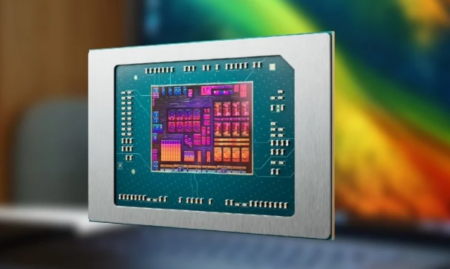Discover effective methods to increase video memory on your laptop and enhance graphics performance for gaming and creative tasks. Elevate your computing experience with expert tips and insights.
The video cards built into the processor, which are often found in laptops, do not have their own memory. They work by using the system’s shared RAM. And here an experienced user will probably have a question – is it possible to increase the amount of video memory? Yes, it is possible. We will tell you how to do it.
How to increase the memory capacity of an integrated video card.


Usually, on laptops with Windows 10 and Windows 11, everything is set up so that the user does not need to do anything. The built-in takes as much memory as it should and the games work correctly. But sometimes it happens that problems begin. For example, games slow down a lot. Is there anything that can be done? You can try, but there is no guarantee of success.
The maximum amount of RAM allocated for video memory depends on the integrated graphics model, the amount of RAM, and the motherboard. Therefore, you won’t be able to jump above your head. And the iGPU, which can handle no more than 4 GB of memory, most likely won’t be able to “pump up” to 6 or 8 GB.
Via BIOS
The BIOS method works like this:
- The user needs to enter the BIOS of their laptop. Each model does this differently. Perhaps, when turning on, you will need to press the Delete or F2 key, or maybe a certain combination of buttons;
- Then you need to find the option that is responsible for allocating memory for the integrated video card. And this section also differs depending on the manufacturer and model of the laptop. You may see the following names: UMA Frame Buffer Size or Share Memory. But it also happens that this option is missing (this is the case with many modern laptops).
Let’s look at the example of a used ASUS laptop:
- Go to Advanced Mode (F7 key);
- Next, go to the Advanced tab and to Graphics Configuration;
- Click on DVMT Pre-Allocated and set the desired video memory value.
Also, the amount of video memory often changes along the path Advanced, Chipset Configuration and Share Memory.
Using a boost driver
Yes, you can. There is a way to increase the amount of video memory in the integrated Intel UHD Graphics using a special boost driver.
But it is not safe, because the iGPU and the processor can get very hot and fail afterwards . And it only works with iGPU Intel UHD Graphics from the 3rd to the 7th series.
If it doesn’t scare you, then do it as in the video.
And text instructions:
- Download a special driver;
- Unzip it;
- Right-click on Start;
- Go to the “Device Manager” section;
- In the “Video adapters” section, right-click on Intel UHD Graphics;
- Click on “Properties”;
- Then select the “Driver” section and then “Update driver”;
- Now you need to click on “Find drivers on this computer” and “Search for drivers on your computer”;
- Specify where the driver is unpacked.
Now you need to install the driver. Windows will warn you about possible driver incompatibility. If you are not sure, it is better not to continue .
But if you want to take a risk, then in addition to installing the driver, you will also need to edit the registry. To do this:
- Download and run the registry file;
- Let’s say it says 1 or 2 GB;
- In the DedicatedSegmentSize section, change the numbers to the ones you need;
- Restart your PC.
Is it possible to increase the memory capacity of a discrete graphics card?
Unfortunately, it is not possible. If your PC has a discrete (separate) video card, then you will not be able to increase the video memory using BIOS and drivers, since this is a separate device with parameters set by the manufacturer.
Of course, there is a theoretical possibility of increasing the video memory, but to do this, you will have to remove the card and solder additional video memory modules to it. But almost no one does this, since this entails the need to reflash the software, as well as reconfigure the entire system and install new cooling in the laptop.
In addition, there is a risk that the video card will not work at all, since its “heart” (GPU/graphics chip) may simply not be designed to work with a large amount of video memory.